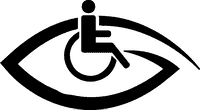Many people just open Microsoft Word and start typing. But the top part of Word, called the ribbon, has powerful tools that can save time and make your work easier. This guide is especially made for blind users, but it’s helpful for everyone.
What is the Ribbon?
The ribbon is the big toolbar at the top of Word. It has all the buttons and tools you need, like bold, underline, insert pictures, and more.
Main Parts of the Ribbon
- Tabs: These are like main sections. Example: Home, Insert, Design.
- Groups: Inside each tab, tools are grouped by purpose. Example: Font group, Paragraph group.
- Dropdown Menus: These show more options when you click them. Example: Font size menu.
- Split Buttons: These do one thing if you click the top part and show more options if you click the bottom part. Example: Bullets button.
- Quick Access Toolbar: A small toolbar at the top-left corner. You can add your favorite tools here.
Keyboard Shortcuts for Each Tab
Press the Alt key, then press the letter below to open that tab:
- Alt + H – Home
- Alt + N – Insert
- Alt + G – Design
- Alt + P – Layout
- Alt + S – References
- Alt + M – Mailings
- Alt + R – Review
- Alt + W – View
- Alt + D – Draw
Tab-by-Tab Simple Guide
1. Home Tab
This is your basic editing tab. It has:
- Clipboard: Copy and paste
- Font: Bold, italic, font size, font color
- Paragraph: Align text, bullets, line spacing
- Styles: Use headings for better navigation
2. Insert Tab
Add things to your document:
- Pictures, tables, shapes, icons
- Header and footer
- Page number
- Links and bookmarks
3. Draw Tab
Use digital pens if you have a touch screen:
- Draw with pen or highlighter
- Convert ink to text
- Lasso select to move drawings
4. Design Tab
Make your document look better:
- Themes and colors
- Page borders
- Watermarks like “Confidential”
5. Layout Tab
Set how your page is arranged:
- Margins and spacing
- Columns (like newspapers)
- Page size and orientation
6. References Tab
Helpful for students and writers:
- Citations in APA or MLA
- Table of contents
- Insert footnotes
7. Mailings Tab
Send letters or emails to many people:
- Mail merge (connects to Excel)
- Print labels or envelopes
8. Review Tab
Work with others and check your writing:
- Track changes (see edits)
- Comments
- Check spelling and grammar
- Accessibility checker for screen readers
- Read Aloud to listen to your document
9. View Tab
Change how your document looks:
- Zoom in and out
- Show ruler or gridlines
- Focus mode for distraction-free writing
- Read mode for easy reading
- Split view to see two parts of the document
Conclusion
The ribbon is more than just buttons. It’s your control center for writing smart and fast. With practice, you’ll work like a pro—even without a mouse!
